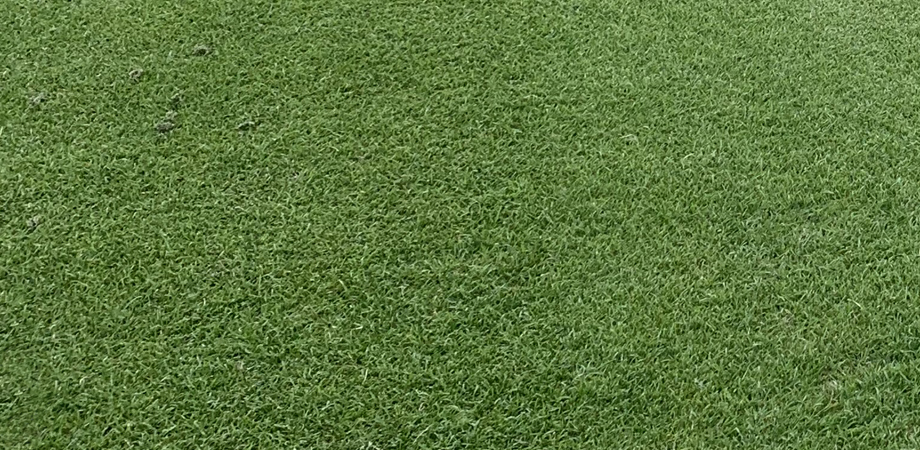Fall and Winter Poa annua Control in Zoysia

Turf managers across most of the country have fought the battle with Poa annua long and hard for many years. Poa easily infests all areas of the golf course. This blog will discuss control measures used in zoysiagrass, particularly strategies we use in the fall and winter for Poa control on zoysia.
For years, many people relied solely on a wintertime application of glyphosate on dormant zoysia to clean up any Poa that had infested the turf throughout the fall. This could be combined with a pre-emergent application, leaving a clean slate heading into spring. While this is still a fairly common practice, it does leave a gap from early fall to winter when Poa can germinate freely and leave the tan-colored, dormant zoysia littered with green clumps of Poa.
To combat this, we turned to a late summer pre-emergent application typically using prodiamine at a reduced rate (0.5-0.6 lbs. AI/A), leaving some leeway to apply this again in the winter or spring without over-applying. Any escapes from this application could be addressed with the winter glyphosate application.
Both of these strategies are very sound, but in the last several years, more and more turf managers have seen less than stellar results with these applications, and have turned to some alternatives.
Specticle herbicide was introduced about eight to ten years ago and has become a great alternative to prodiamine in the fall. It has a low usage rate of 6-8 oz per acre, and can be tank mixed with fungicides used for large patch on zoysia. While it is in the same chemical family (DNA) as prodiamine, it has proven very effective as a pre-emergent in the fall for Poa. This is especially true when a sulfonylurea herbicide, such as Revolver, Katana, etc., is added to the tank for post-emergent control.
More recently, Coastal herbicide was introduced, and it too has proven to be a very effective tool in the fall. Coastal is a combination of prodiamine, imazaquin, and simazine, and in the transition zone, it is applied at 48 oz per acre. The addition of imazaquin and simazine gives it strong post-emergent control of Poa along with the pre-emergent control. We generally do not need to add a sulfonylurea to the mix with Coastal.
Even with the additions of Specticle and Coastal as alternatives for fall control, we will still often see the need for that winter glyphosate application. You can use glufosinate-ammonia (Finale/Cheetah Pro) as an alternative to glyphosate, but the timing on this is a little more critical to avoid phyto. If you stick with glyphosate, adding ammonium sulfate to the tank is one recommendation to improve this application. Anywhere from eight to ten pounds of spray-grade ammonium sulfate will be sufficient. This will especially help in places with hard water high in calcium or magnesium. The sulfate in ammonium sulfate will help to neutralize the calcium and magnesium, offering more effective control.
John Dixon
Sales Representative







